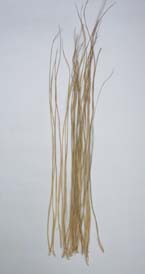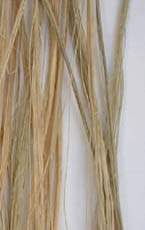
Esparto is a vivacious,one metre high and perennial graminea (grass). Its leaves are persistent, radicals, so rolled around themselves and along which make them appear as threadlike,indestructible and tough at the same time , not fuzzy at all and about 40 to 60 cm high. It has a limp and branched,yellowish panicle. It grows in uncultivated, dry and stony grounds situated in the Center and South of Spain and in the North of Africa.
Romans knew the esparto grass and they valued it for its high strength and durability. It is easy to understand that, after the passage of time, country people have added new domestic purposes and different methods to plait their leaves. So many, affectionate moments and unpleasant memories as well of our elders permit us to affirm that domestic life revolved around esparto: a real esparto culture did exist.
It’s good to recognize, that in that times esparto culture didn’t exist as craftsmanship. The whole family was involved in the daily activities around esparto in a living and natural way. Sons and daughters were providing the esparto, to have it always ready when father needed. Mothers weaving cofines. Grandparents weaving pleitas to lift "capazos", "rugs", "aguaderas", "capazas", "serones"...













